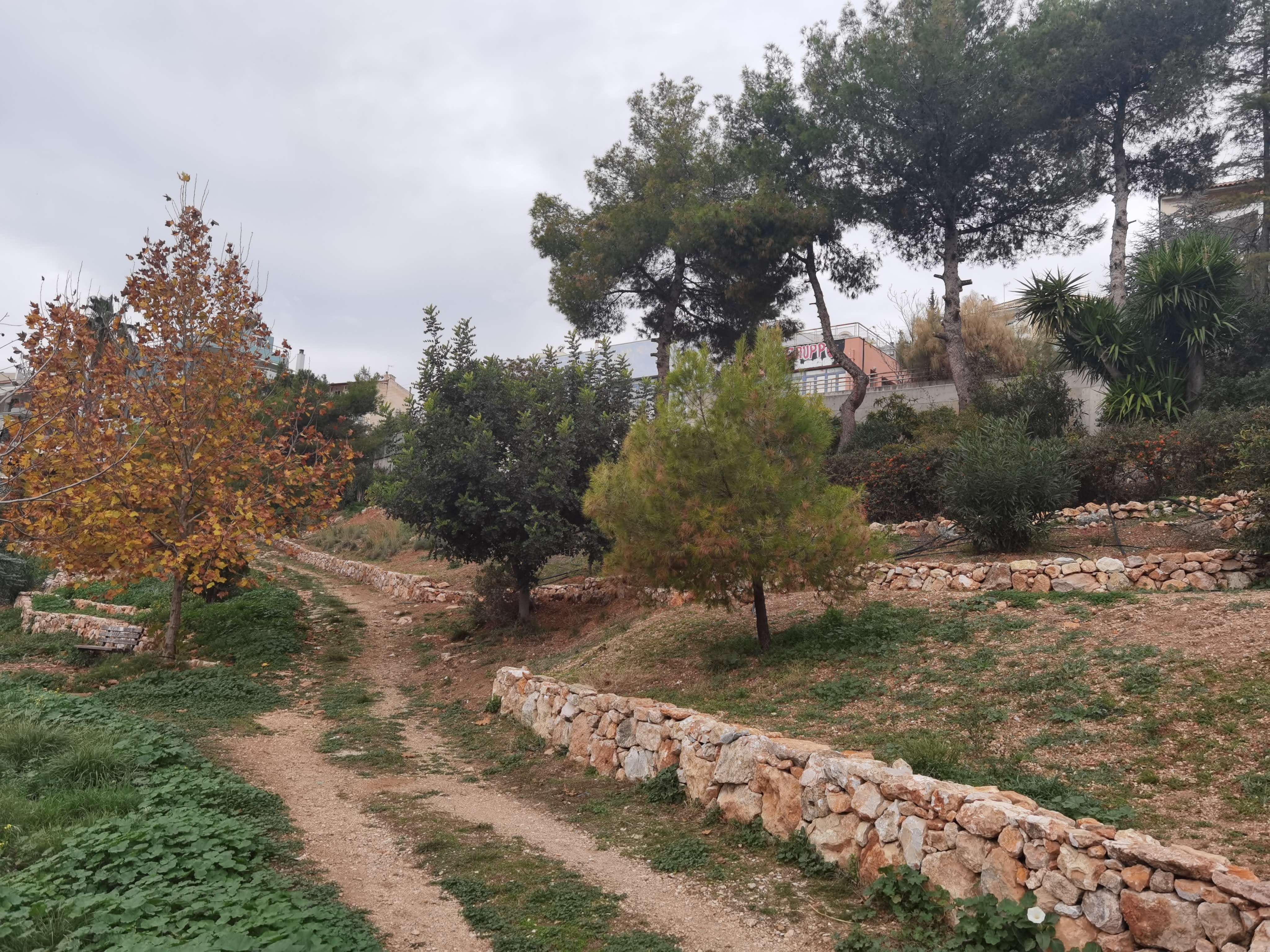
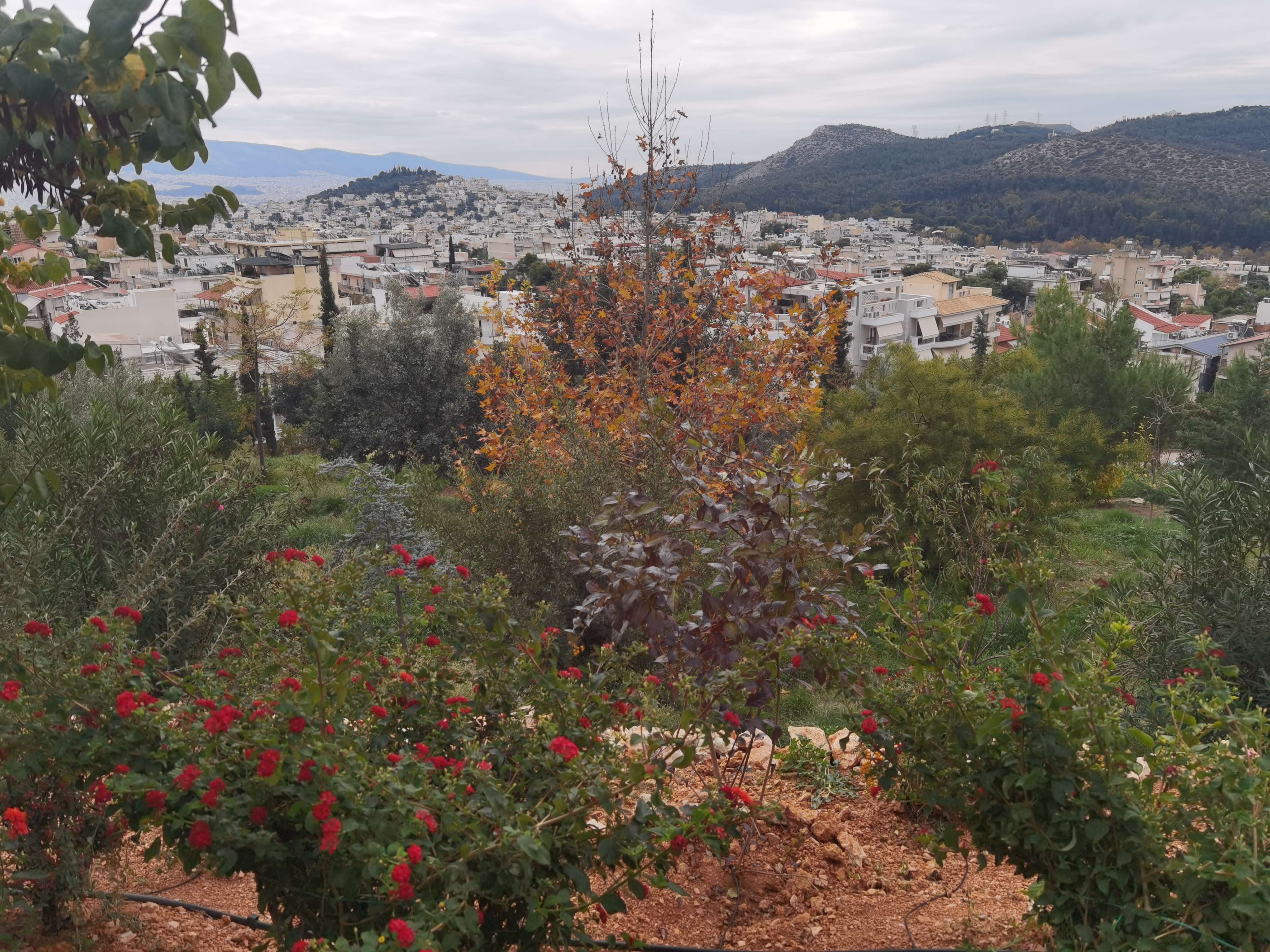
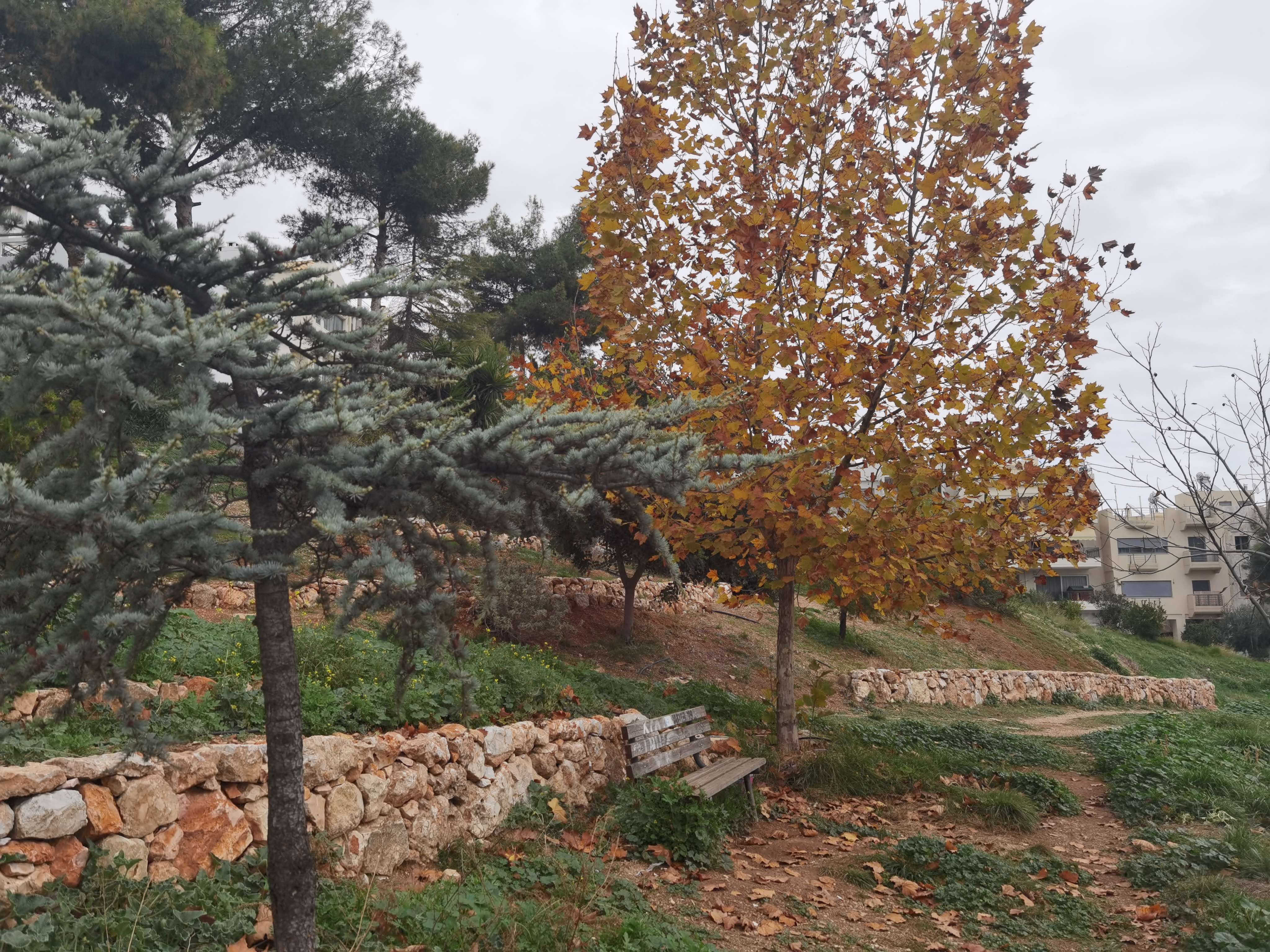

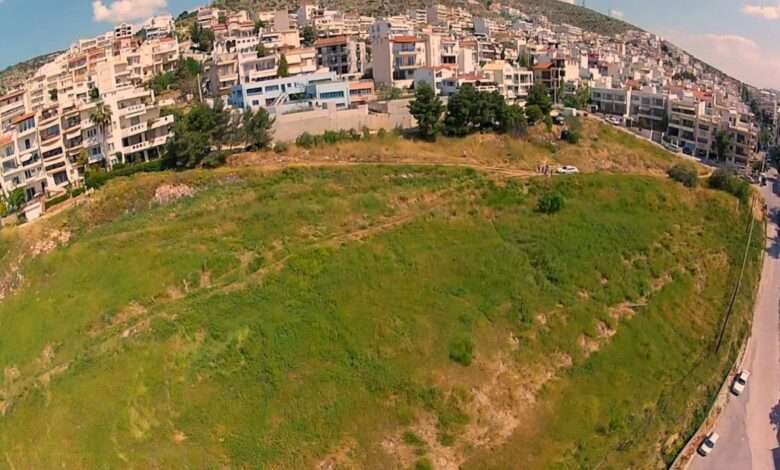
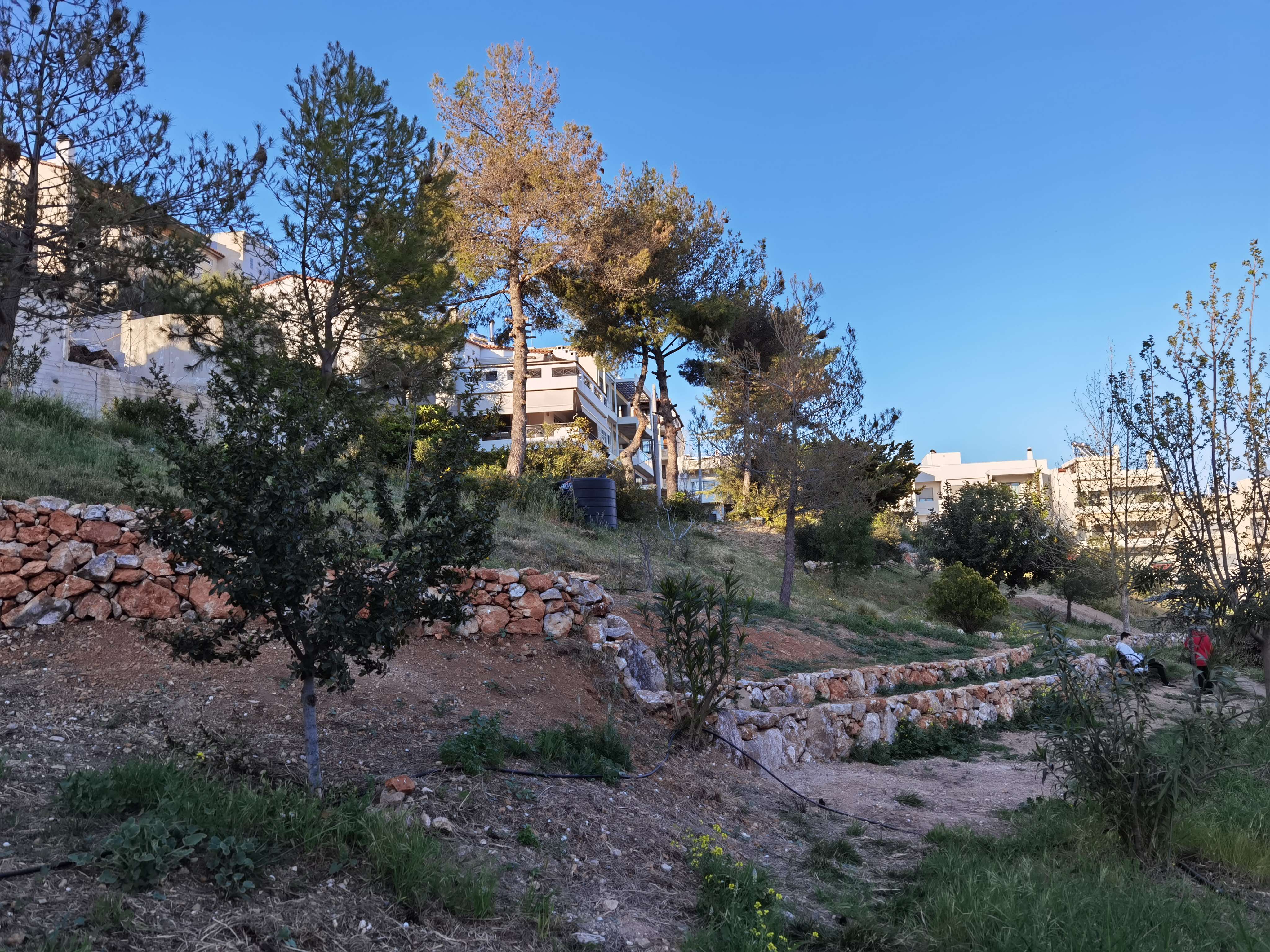
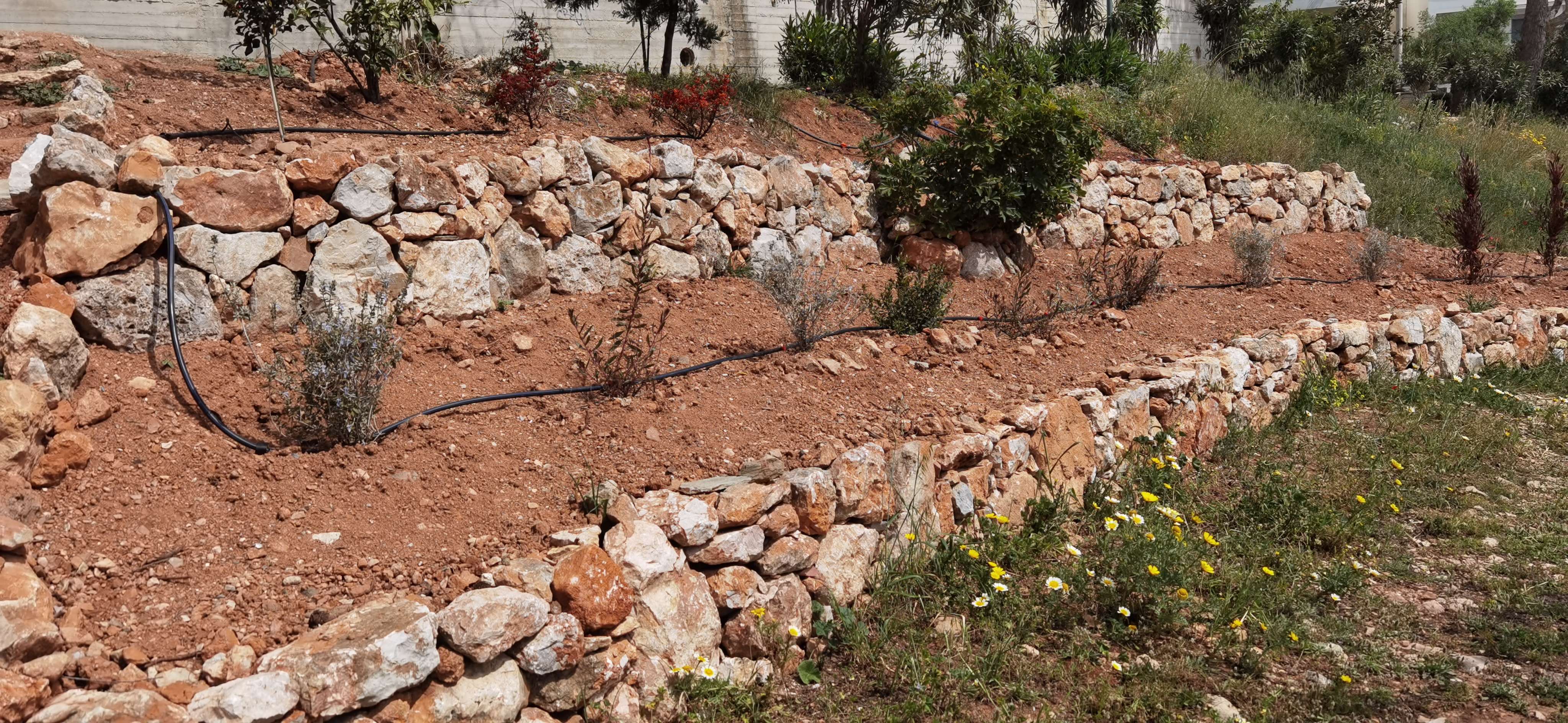
Volunteer Park
Linking western Athens with its periurban landscape: The creation of Chaidari Volunteer Park
Linking western Athens with its periurban landscape: The creation of Chaidari Volunteer Park
Linking western Athens with its periurban landscape: The creation of Chaidari Volunteer Park
Menelaos Chronis
At the western edge of the densely-populated city agglomeration of Athens, a new green oasis has been created. Based on the principles of volunteer participation and construction material recycling, an abandoned industrial site in Chaidarion municipality could be requalified. In particular, an old quarry of 1,1 hectares, which had been occasionally landfilled in the 1960ies with construction waste but remained barren without any further design, could be transformed into a vivid green park. Between 2010 and 2022, a volunteer initiative of Chaidarion’s citizens stepped in to create this public recreation area at the impressive slopes of the Poikilon mountain group. Due to this location, the whole area is characterized by quite noticeable gradients.
One of the core interventions was to plant approximately 600 trees and shrubs of species found in the neighbouring periurban woods. But also safeguard, accessibility and aesthetic issues were discussed as the volunteer citizen initiative decided to thoroughly apply sustainability principles. In practice, this means recycling of construction materials which could exclusively be found on-site, thus also excluding high transport effort in this mountainous area, whilst only manual work combined with traditional techniques and tools was deployed. As a result, no concrete was used at all, whereas the only built elements of the park are drywalls. The latter are necessary as mantling and benching elements at the slopes of the park, similar to the century-old technique used on the Aegean islands. Terraces and space for paths in between were created by filling the uneven and bumpy spaces behind these drywalls with soil, which had been recovered by sieving.
By this procedure, the construction waste which deteriorated the whole area was collected and given a new, practical and aesthetic function. More specific, the visible side of the drywalls were built with natural stones and traditional techniques, whereas on the back side, toward the planted areas filled with soil, concrete elements or brick stones etc. were reused. Hence, progressively the unaesthetic and in part dangerous materials disappeared from the park surface and passed the floor to planted spaces and edgings.
